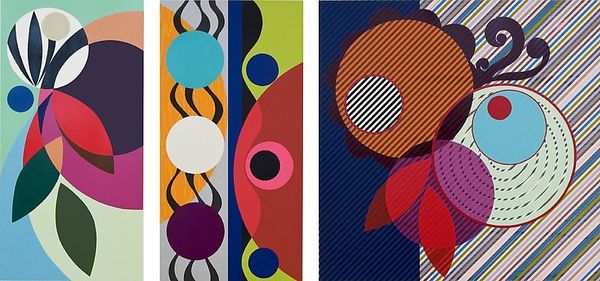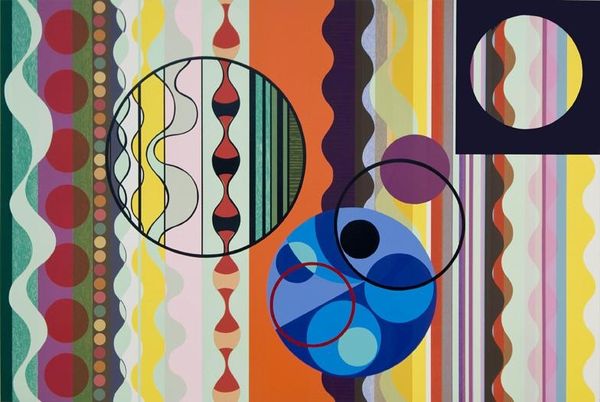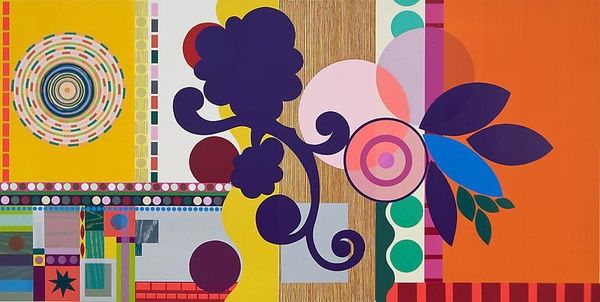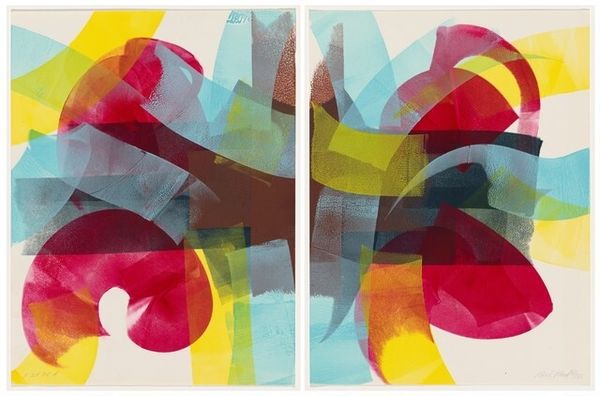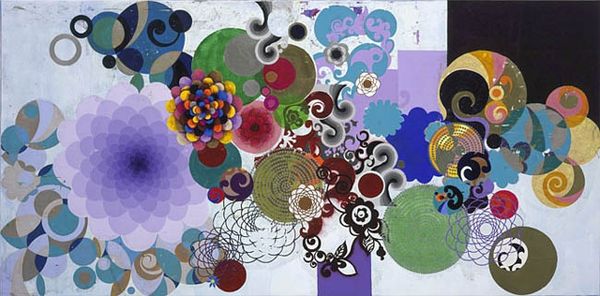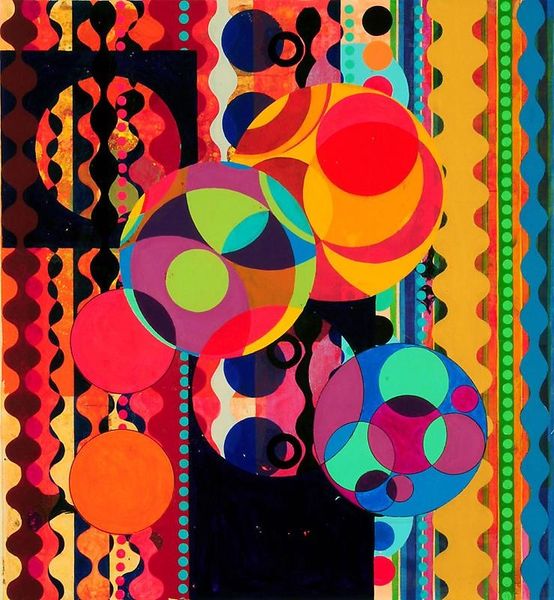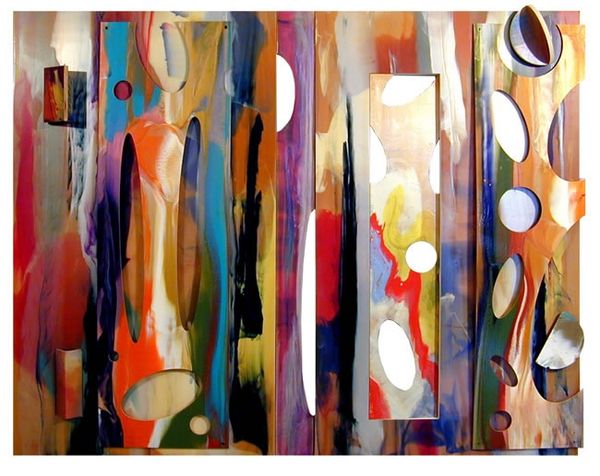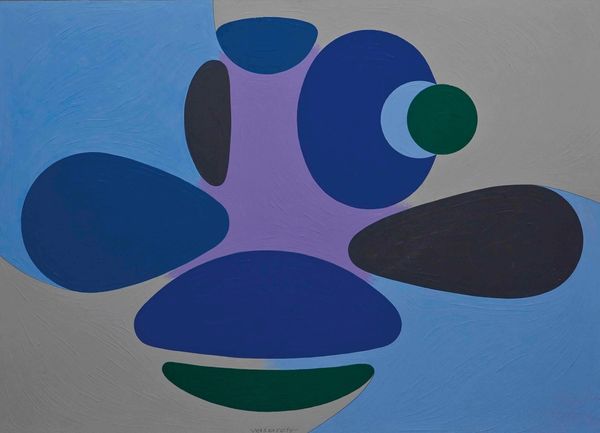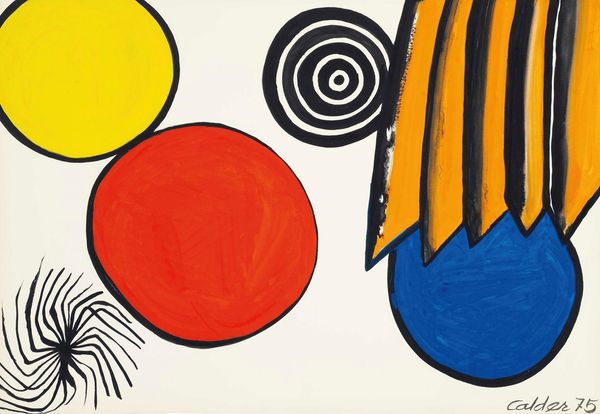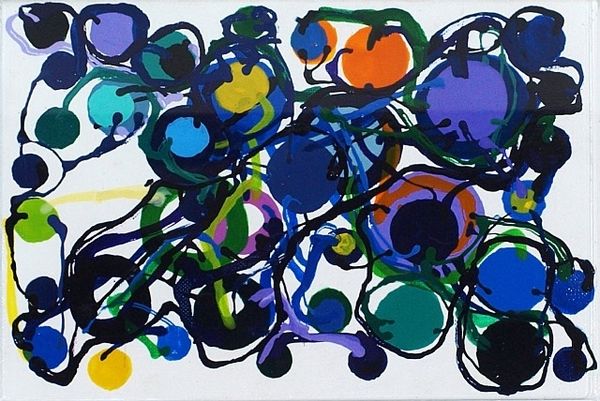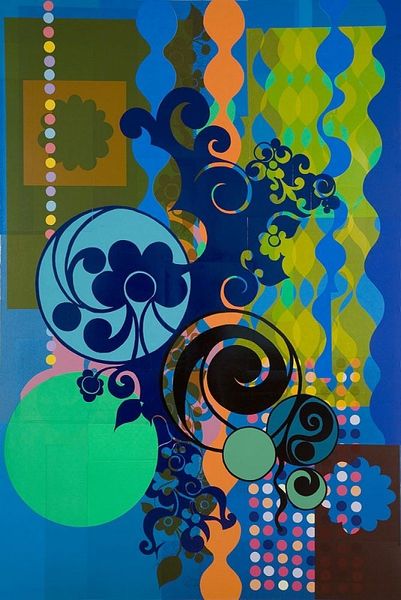
acrylic-paint
#
pattern-and-decoration
#
acrylic-paint
#
geometric
Copyright: Beatriz Milhazes,Fair Use
Curator: "Salt (Diptych)," a work created in 2009 by Beatriz Milhazes. Immediately, it's this electric yet earthy buzz – doesn’t it feel that way to you? Like a flower pressed between circuit boards. Editor: It strikes me more as an investigation of surfaces and processes than something floral. This work blends collage and acrylic on canvas, an explicit nod to layering materials. You can almost smell the glue fumes meeting the gloss of the paint. Curator: Ooh, the synesthesia! Yes, exactly! I mean, look at how she marries the handmade with something slick. Those hard-edged geometries – those little insistent dots! – they vibrate against the flowing organic shapes. What story are the materials telling? Editor: Well, there’s an undercurrent of production, an unromantic assembly line humming beneath the bright colors. The mixed media allows Milhazes to question what labor or steps went into production or what's involved with craft. The layers point towards human activity: cutting, pasting, painting and layering. It's the art of construction laid bare. Curator: "Unromantic"?! I think there's a huge amount of generosity in all of the patterns. And I see more: It feels playful and inviting, like Brazilian Carnival! You want to dive in and get swept up in the rhythm, the joyous energy. What about how these flat planes create a sense of depth? A portal that is, somehow, grounded in materiality. Editor: Carnival's sequins might not come from some fairytale. And its floats rely on labor and material practices as well. Even celebratory objects aren’t divorced from their mode of production, or the sweat that made it, literally and figuratively. It looks at the work in her art, which reflects more general types of production. Curator: You always bring me down to Earth! But maybe it is this tension, this playful collision of high and low, that makes "Salt" so darn intriguing. Editor: Indeed, it pushes the decorative, almost to the point of becoming aggressively pretty—but stops short by revealing the scaffolding beneath. Always fascinating!
Comments
No comments
Be the first to comment and join the conversation on the ultimate creative platform.
